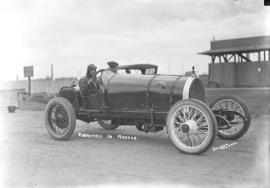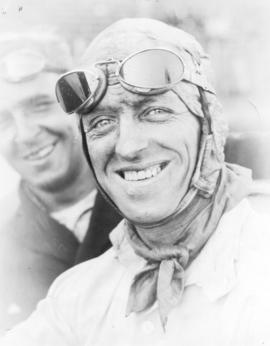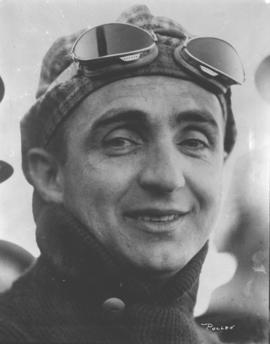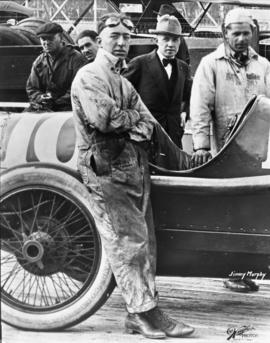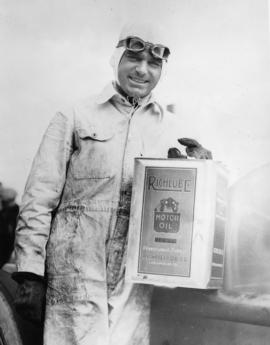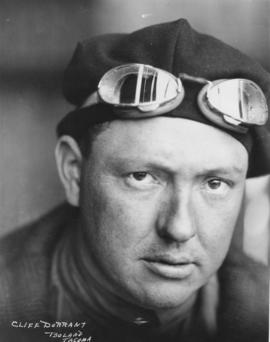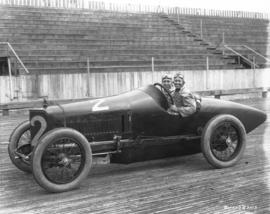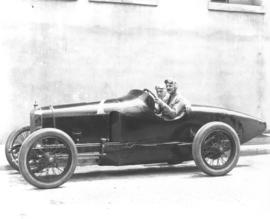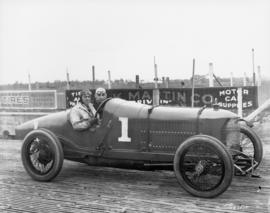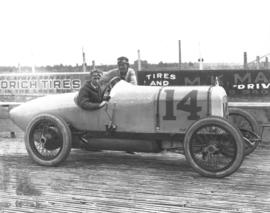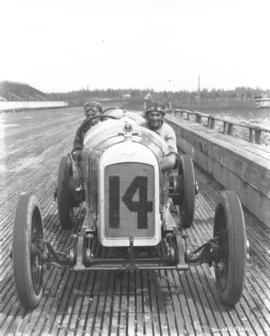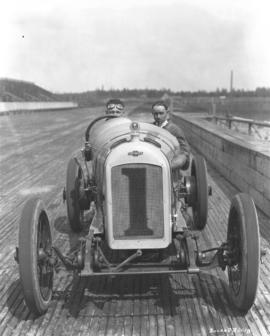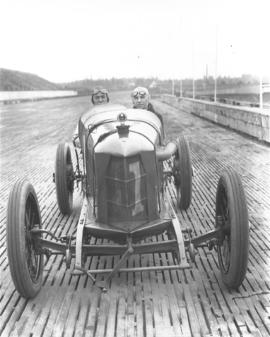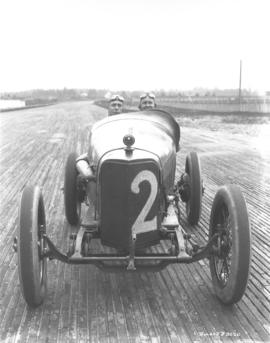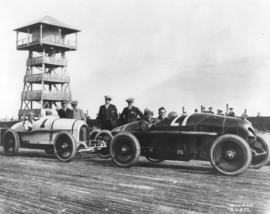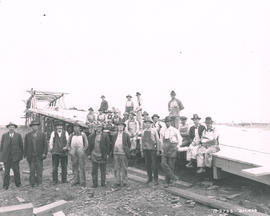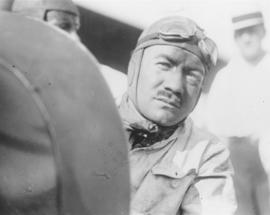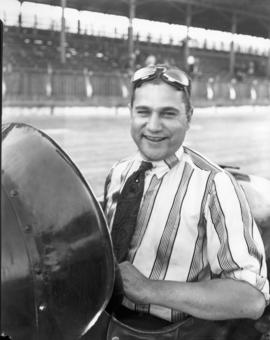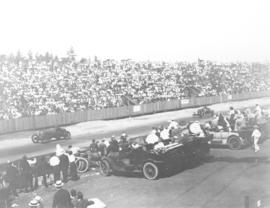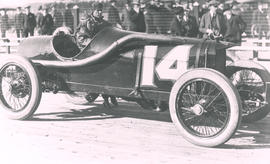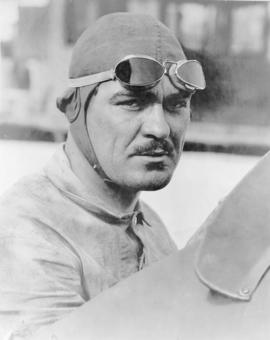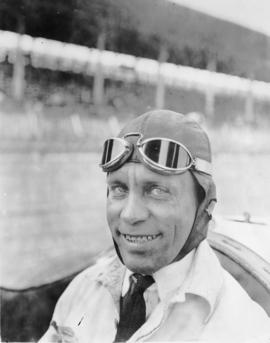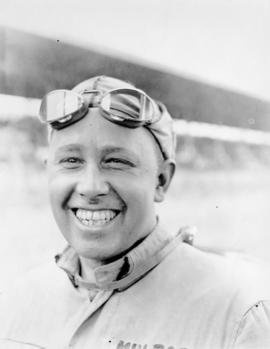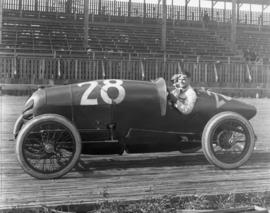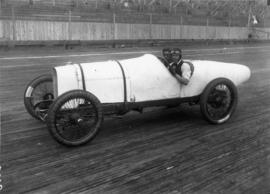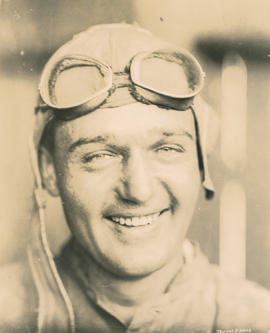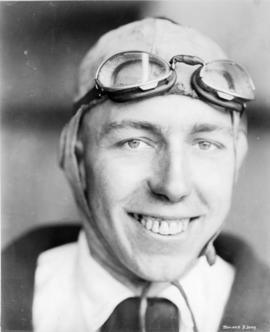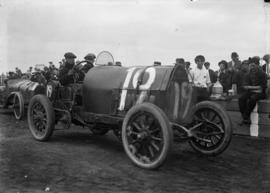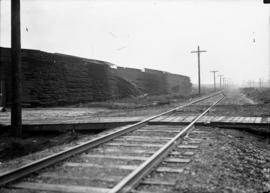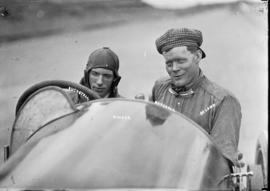- Item
- 1914-07
Part of Marvin Boland Photographs
Grover Ruckstell and his mechanic Quicksell pose in Ruckstell's Mercer at the July 1914 races at the Tacoma Speedway. On July 4th, in front of a crowd of 35,000 screaming fans, Ruckstell would fight his way to a second place finish behind Earl Cooper in the Montamarathon. Ruckstell's time for the 250 mile race was 3:23:33. It was the largest crowd in Tacoma's racing history and they were not disappointed with the heavily fought race. Teddy Tetzloff was in the lead until he dropped out in lap 113 with wheel problems, and limped to the pits with his mechanic laying across the hood holding the wheel. Ruckstell fought Bert Dingley for second place until Dingley spun off the course in lap 123, sustaining life threatening injuries. The crowd was in a frenzy as Ruckstell passed the checkered flag. TPL-103 Speedway-067 (T. Tribune 7/5/1914, pg. 1)
Tacoma Speedway (Lakewood); Racetracks--Lakewood--1910-1920; Automobile racing--Lakewood--1910-1920; Racing automobiles--1910-1920; Ruckstell, Grover; Mercer automobile; Automobile racing drivers;
